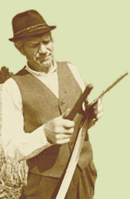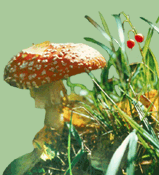The history and present-day of hemp
Ülle Sillasoo and Toomas Kukk write about one of the most ancient cultural plant the hemp (Cannabis). For centuries it has been cultivated for the production of resistant fiber and seeds rich in oil. However, all forms of hemp contain some amount of narcotic components and therefore the cultivation of hemp is regulated by law. The authors argue that the type of hemp that was grown on Estonian fields was, however, so poor in narcotic compounds, that regulated agricultural cultivation of fiber and seed hemp should be allowed in Estonia. The article also brings some clarity to the complicated taxonomy of hemp species and geographical subtypes and looks at the worldwide cultivation and use of the remarkable plant.
Hemp seeds were used for making hemp butter, milk and porridge
Urmas Kokassaar convinces the reader of the brilliant features of hemp seeds and gives advice about using them. The hemp seeds contain as much as 35% of oil and are therefore very nutritious. Lots of delicious foods were made of these seeds.
Old bones dont just stay there
Lembi Lõugas stresses the importance of old bones as resource for scientific research. The legislation regarding old bones is very weak or almost lacking, and the collection and conservation of these is very random. However, old bones are valuable archive material since a lot of information about past lives is preserved in the chemical composition of bones. Recently, DNA analysis of old bones has become the most promising research trend.
Eesti Loodus enquires
Peep Mardiste looks at the influence of WTO at environment.
Haldja Viinalass states that the Estonian pure breed sheep does genetically not exist any more.
Essay
Indrek Rohtmets recalls his rendez-vous with a crow.
Jalase landscape protection area
Piret Kiristaja describes a very special protected area in Raplamaa. It is created to give protection to a very old village that has beautifully blended into nature. Therefore, the protection of settlement pattern with surrounding cultural landscapes is of utmost importance here.
Biggest species diversity in Estonia is 200 years old
Toomas Kukk reminds of the glorious past of the Botanical Garden of Tartu University. This autumn the garden celebrated its 200th anniversary. Three hectars of land include 6500 taxa of plants, making the garden the place of highest plant diversity in Estonia. Despite of the honorable age, the prospects for future look good as well.
The Estonian Naturalists Society: 150 years old
Hans Trass writes an anniversary article about the oldest naturalist institution in the Baltic States.
European rarities in Estonia
Ülo Väli introduces two species of eagles, that are quite similar, but at the same time different. There are two species of spotted eagles in Estonia: while the lesser spotted eagle is the most common among Estonian eagles, then greater spotted eagle can be viewed only very rarely.
Interview:
Toomas Kukk has interviewed Marek Sammul, plant ecologist.
A Natura 2000 site is a favorable dwelling-place
Kadri Möller encourages landowners: A Natura site would bring economic profit rather than loss. The selection of Natura sites has caused many tensions and passions and a lot of landowners have become afraid that after designating ones land as a Natura site all economic activities would become prohibited. However, a Natura site can prove to be really beneficial, since there are many advantages for the landowners.
Practical tips: taxidermy a way to immortalize nature
Ott Koppa gives advice to those who want to have dead animals or birds stuffed. He points out that taxidermy is not only about stuffing animals, but also creating the suitable surroundings to expose the results.
Kunda: well-known after Cambrian
Kaisa Mens explains the relation between Kunda and Cambrian. Kunda is famous for Cambrian clay. The article explains the history of the research of the Cambrian stages.
Nail dirt in the fog or hidden away from the Estonian tropical weather
Toomas Jüriado visited the Faeroe Islands and discovered a land of unique nature, almost untouched by tourists. There is much more to the islands than fog: diverse bird life, nice grass roofs, steep cliffs and friendly locals.
| 

![[IN ENGLISH]](images/gb.gif)






